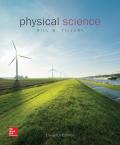
Concept explainers
Small changes that result in the breaking up, crumbling, and destruction of any kind of rock are
a. decomposition.
b. weathering.
c. corrosion.
d. erosion.
The changes that take place as a result of breaking up, crumbling and destruction of any kind of a rock from the following options:
Decomposition.
Weathering.
Erosion.
Corrosion.
Answer to Problem 1AC
Solution:
Option (b) is correct.
Explanation of Solution
Introduction:
Rocks are the compounds made up of combination of minerals. It is a naturally occurring substance. Weathering denotes physical or chemical break down of rocks. It is of two types: Chemical and Mechanical.
Explanation:
Reason for the correct option:
Weathering is the process of breaking down of rocks in the presence of earth atmosphere.
Hence, option (b) is correct.
Reason for the incorrect options:
Option (a) is incorrect because decomposition refers to the state of decay of minerals into rocks. So, it is a wrong answer.
Option (c) is incorrect because corrosion is defined as the destruction of rocks by some chemical reactions. So, it is a wrong answer.
Option (d) is incorrect because erosion is the removal of top layers of rocks by the movement of winds. So, it is a wrong answer.
Hence, options (a), (c) and (d) are incorrect.
Conclusion:
Small changes which result in the breaking up, crumbling and destruction of any kind of rock are weathering.
Want to see more full solutions like this?
Chapter 20 Solutions
EBK PHYSICAL SCIENCE
Additional Science Textbook Solutions
College Physics: A Strategic Approach (3rd Edition)
Fundamentals Of Thermodynamics
Human Biology: Concepts and Current Issues (8th Edition)
Cosmic Perspective Fundamentals
General, Organic, and Biological Chemistry - 4th edition
Human Anatomy & Physiology (2nd Edition)
- What is the period of a rock of mass 2.0kg tied to the end of a spring 0.625m long string that hangs in a doorway and has an elastic constant of 40N/m?arrow_forwardGive an example of friction speeding up an object.arrow_forwardWhich is the higher temperature? (Assume temperatures to be exact numbers.) (a) 272°C or 272°F? 272°C 272°F They are the same temperature. (b) 200°C or 368°F? 200°C 368°F They are the same temperature.arrow_forward
- What is the direction of a force vector given by ~v = −6Nˆi − 8Nˆj?arrow_forwardWhat can be said of the position vector of an object far from any influences on its motion?arrow_forward་ Consider a ball sliding down a ramp as shown above. The ball is already in motion at the position 1. Which direction best approximates the direction of acceleration vector a when the object is at position 2?arrow_forward
 An Introduction to Physical SciencePhysicsISBN:9781305079137Author:James Shipman, Jerry D. Wilson, Charles A. Higgins, Omar TorresPublisher:Cengage Learning
An Introduction to Physical SciencePhysicsISBN:9781305079137Author:James Shipman, Jerry D. Wilson, Charles A. Higgins, Omar TorresPublisher:Cengage Learning Physics for Scientists and Engineers, Technology ...PhysicsISBN:9781305116399Author:Raymond A. Serway, John W. JewettPublisher:Cengage Learning
Physics for Scientists and Engineers, Technology ...PhysicsISBN:9781305116399Author:Raymond A. Serway, John W. JewettPublisher:Cengage Learning Horizons: Exploring the Universe (MindTap Course ...PhysicsISBN:9781305960961Author:Michael A. Seeds, Dana BackmanPublisher:Cengage Learning
Horizons: Exploring the Universe (MindTap Course ...PhysicsISBN:9781305960961Author:Michael A. Seeds, Dana BackmanPublisher:Cengage Learning AstronomyPhysicsISBN:9781938168284Author:Andrew Fraknoi; David Morrison; Sidney C. WolffPublisher:OpenStax
AstronomyPhysicsISBN:9781938168284Author:Andrew Fraknoi; David Morrison; Sidney C. WolffPublisher:OpenStax




